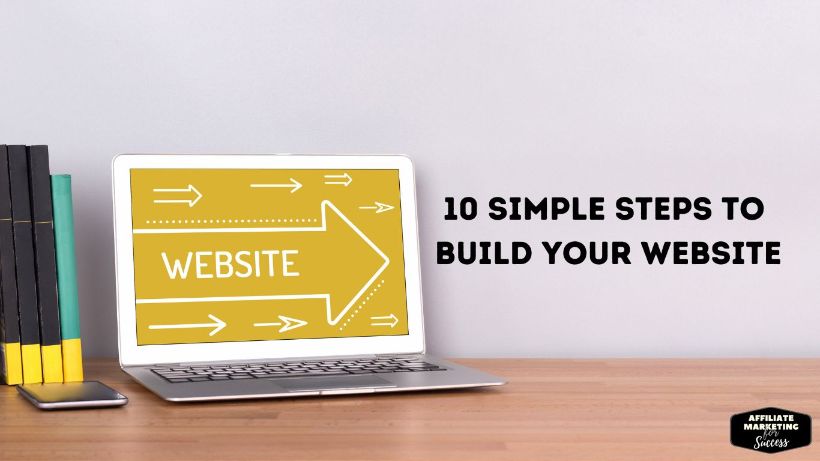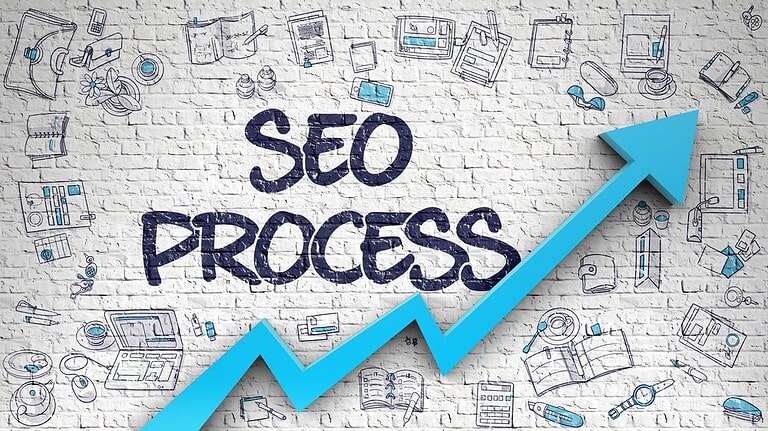How to Build a Website in 10 Simple Steps (2025 Guide)
A website is essential in today’s digital world for businesses, individuals, and organizations. Building a website has become more accessible, catering to small business owners, bloggers, and those seeking an online presence.
This guide outlines 10 simple steps from planning to launching your site.
Key Takeaways:
- Building a website is now accessible to beginners
- No coding knowledge is required to create a professional site
- The guide covers 10 simple steps from planning to launch
- Modern tools make website development easier than ever
- Optimization tips ensure your site’s success
Understanding Website Basics
Let’s explore the world of websites! I’ll show you the basics of website parts, types, layout, content, and how it works. Knowing this will help you make your own online space.
What is a website?
A website is a group of web pages on the internet. It’s like your digital home. It’s where people can learn about you, your business, or your ideas. Websites vary in purpose and design.
Different types of websites
There are many kinds of websites. Some common ones are:
- Business sites: Show products and services
- E-commerce platforms: Sell goods online
- Blogs: Share thoughts and ideas
- Portfolios: Show creative work
- Educational sites: Offer learning resources
Each type needs its own structure and content. For example, an e-commerce site needs product pages and a shopping cart. A blog focuses on articles and comments.
Step 1: Plan Your Website

Before diving into website building, it’s essential to have a clear plan:
- Define your website’s purpose
- Identify your target audience
- Outline your content strategy
- Sketch a basic layout for website design
A well-planned website is the foundation for success in the digital world.
Step 2: Choose a Domain Name and Web Hosting
Selecting the right domain name and web hosting provider is crucial for your website’s success and accessibility.
Selecting a Domain Name
With millions of domain names registered worldwide, choosing a unique and memorable one can be challenging. Here are some tips:
- Keep it short and relevant to your brand
- Consider using keywords related to your business
- Explore different domain extensions (.com, .org, .net)
Finding a Web Hosting Provider
When choosing a web hosting service, consider factors such as:
- Server reliability
- Storage capacity
- Customer support quality
- Security features (e.g., SSL certificates)
Many hosting providers offer affordable hosting plans, with some starting as low as $2.99 per month. Some web hosting providers even include a free custom domain name for the first year with their hosting packages.
Learn more about choosing the right web host
Step 3: Select a Website Builder or Content Management System (CMS)
Choosing the right website development platform is crucial for your site’s functionality, usability, and scalability.
Popular Website Builders for Beginners
For those new to website creation, user-friendly website builders like Wix, Squarespace, and WordPress.com offer:
- Intuitive drag-and-drop interfaces
- Pre-designed customizable templates
- No coding required
These platforms make it easy to create a professional website quickly.
Content Management Systems
Advanced users or those scaling their website can use Content Management Systems (CMS) like WordPress.org, Joomla, and Drupal for better functionality.
- Greater customization options
- Scalability for growing websites
- Extensive plugin ecosystems
While these platforms offer more control, they may have a steeper learning curve.
Discover the benefits of WordPress for blogging
Step 4: Design Your Website
Now that you’ve chosen your platform, it’s time to focus on web design. A well-designed website not only looks good but also enhances user experience and supports your content strategy.
Choosing a Theme or Template
Most website builders and CMS platforms offer a variety of themes or templates. When selecting one, consider:
- Alignment with your brand identity
- Responsiveness (how it looks on different devices)
- Customization options
For WordPress websites, choosing the right WordPress theme is crucial for achieving the desired look and functionality.
Customizing Your Design
Once you’ve chosen a base theme, customize it to make it uniquely yours:
- Adjust color schemes to match your brand
- Upload your logo and favicon
- Modify layouts to suit your content needs
Learn how to create a style guide for your blog
Step 5: Create and Organize Content
Content is the heart of your website. It’s what will attract website visitors and keep them engaged.
Writing Engaging Content
When creating content for your website:
- Use clear, concise language
- Structure your content with headings and subheadings
- Include relevant keywords for search engine optimization
Organizing Your Pages
A well-organized website helps visitors find what they’re looking for quickly. Common pages include:
- Home
- About
- Products/Services
- Blog post section
- Contact
Discover how to write high-ranking blog posts
Step 6: Add Functionality and Features
Enhance your website with features that improve user experience and support your goals.
Essential Features to Consider
Depending on your website’s purpose, you might want to add:
- Contact forms
- Social media platforms integration
- Newsletter sign-up forms
- E-commerce capabilities for an online store
- Search functionality
Using Plugins and Extensions
Many platforms offer plugins or extensions to add functionality without coding. For WordPress websites, popular options include:
- Yoast SEO for search engine optimization
- WooCommerce for e-commerce website functionality
- Akismet for spam protection
Explore essential tools for bloggers
Step 7: Optimize for Search Engines (SEO)
Help potential website visitors find your site by implementing basic search engine optimization practices.
On-Page SEO Basics
- Use relevant keywords in your content, titles, and meta descriptions
- Create descriptive URLs
- Optimize images with alt text
Technical SEO Considerations
- Ensure your website loads quickly
- Make your site mobile-friendly
- Use HTTPS for security
Learn about the importance of SEO for your blog
Step 8: Test Your Website
Before launching, thoroughly test your website to ensure everything works as intended.
Functionality Testing
- Check all links and buttons
- Test forms and interactive elements
- Verify e-commerce processes (if applicable)
Cross-Browser and Device Testing
Test your website on different browsers (Chrome, Firefox, Safari, Edge) and devices (desktop, tablet, smartphone) to ensure consistent performance.
Step 9: Launch Your Website
It’s time to make your new website live!
Pre-Launch Checklist
- Double-check all content for errors
- Ensure all pages are linked correctly
- Set up analytics tools (e.g., Google Analytics)
Going Live
Follow your platform’s instructions to publish your website. This usually involves:
- Connecting your domain
- Configuring DNS settings
- Activating your site
Step 10: Maintain and Update Your Website
A website is an ongoing project. Regular maintenance ensures it remains effective and secure.
Regular Updates
- Keep your content fresh and relevant
- Update your platform, themes, and WordPress plugins regularly
- Monitor and respond to user feedback
Monitoring Performance
Use analytics tools to track:
- Visitor numbers and behavior
- Popular content
- Conversion rates
Use these insights to continually improve your website.
Discover how to analyze your blog’s user behavior metrics
Creating Engaging Content for Your Website
As a website owner, creating engaging content is crucial for attracting and retaining website visitors. When writing blog or website content, focus on offering value to your audience.
To create engaging content:
- Understand your target audience
- Use compelling headlines
- Include visuals and multimedia
- Write in a conversational tone
- Incorporate relevant keywords for SEO
Remember, content marketing is not just about selling; it’s about building relationships with your audience. Regularly updating your website content keeps your site fresh and encourages visitors to return.
10 Easy Steps to Launch Your Online Store
Creating an e-commerce website doesn’t have to be complicated. Here are 10 easy steps to get your online store up and running:
- Choose a niche for your products
- Select an e-commerce platform (like WooCommerce for WordPress)
- Pick a hosting provider with a suitable hosting plan
- Set up your domain name
- Design your store using customizable templates
- Add products and descriptions
- Set up payment and shipping options
- Implement security measures
- Test your store’s functionality
- Launch and promote your online store
By following these simple steps, you can create a professional website for your e-commerce business without needing extensive web development knowledge.
Maximizing Your WordPress Website
WordPress is a popular content management system for creating a successful website. Here are some tips to make the most of your WordPress website:
Navigating the WordPress Dashboard
The WordPress dashboard is your control center. Familiarize yourself with its features to efficiently manage your site.
Enhancing Functionality with WordPress Plugins
WordPress plugins can add various features to your site. Popular plugins include:
- Yoast SEO for search engine optimization
- WooCommerce for setting up an online store
- Jetpack for security and performance
Choosing the Right WordPress Hosting
Consider managed WordPress hosting for optimal performance and security. Many web hosts offer specialized WordPress hosting plans.
Integrating Social Media Platforms
Connect your website with social media platforms to increase engagement and reach a wider audience.
Working with a Web Designer or Web Developer
Consider hiring a web designer or web developer to craft a custom, professional website that aligns with your specific requirements.
Leveraging these guidelines and harnessing the features of WordPress, you can establish and sustain a thriving website that not only fulfills your business objectives but also captivates your audience effectively.
Conclusion
Follow these 10 simple steps to easily build a website, making it a manageable endeavor. Whether creating a blog or an online store, these steps set a strong foundation. Dedication and attention to detail are crucial for crafting a website that is visually appealing and serves as a powerful marketing tool for your brand.
Embrace the process of website building with a sense of curiosity and flexibility. These steps will guide you in creating an advanced online presence, regardless of your role.
Happy website building!
Source Links
- https://dev.to/apoorv12/a-beginners-guide-to-crafting-ai-picture-prompts-15jk
- https://www.geeksforgeeks.org/introduction-to-javascript/
- https://www.hostinger.com/tutorials/how-to-host-a-website
- https://www.wpbeginner.com/beginners-guide/tips-and-tools-to-pick-the-best-domain-for-your-blog/
- https://www.wpbeginner.com/beginners-guide/how-to-choose-the-best-domain-registrar/
- https://www.forbes.com/advisor/business/how-to-make-a-website-for-your-business/
- https://programminginsider.com/what-affects-website-redesign-cost-key-factors-to-consider/
I’m Alexios Papaioannou, an experienced affiliate marketer and content creator. With a decade of expertise, I excel in crafting engaging blog posts to boost your brand. My love for running fuels my creativity. Let’s create exceptional content together!






